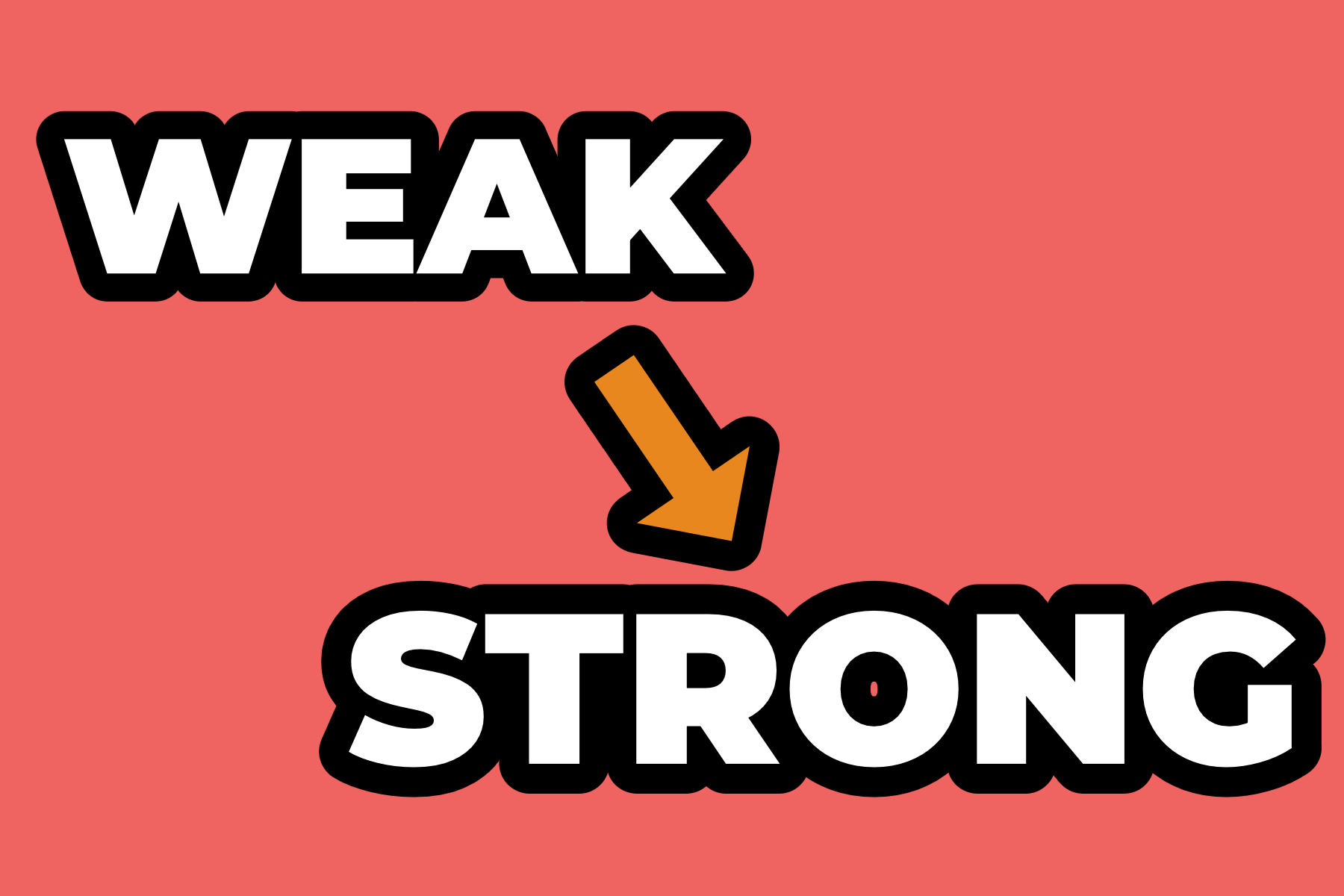“I’m too weak to start using gymnastics rings yet.”
“My body won’t be able to handle the crazy training you do.”
“Those aren’t ‘basic’ movements, they’re impossible!”
“I’m just not built for the sort of training you do.”
If you’re thinking these things, you’re not alone.
The good news is, there’s a fundamental misunderstanding underlying all these statements.
And I’m going to address it now and show you why max-effort strength training on gymnastics rings, taking less than 40 minuted total per week, is not only doable regardless of where your strength is currently at,
but is in fact the best thing you can possibly do to pull your body out of weakness and injury-prone fragility,
and become the sort of person who does look like they train on gymnastics rings, as soon as possible.
The Key To Leaving Weakness Behind Forever
Here’s the key concept you need to understand if you want to get as strong and muscular as possible, as fast as possible:
Everything scales to zero.
No matter how weak and fatigued you are, even if there is next to zero strength left in your muscles, you can still keep training.
…if you simply know how to adjust the difficulty of your exercises.
One Method, Adapted To Your Strength
There’s no difference in how an absolute beginner to strength training, and someone with seven years of experience needs to train.
The principles remain the same.
All that changes is the absolute level of difficulty that they need to use.
And here’s the thing: If you’re training in the method we use of constantly adjusting the difficulty to match your maximum strength at every point in time…
Then that’s already accounted for!
(This approach is the core of what makes RINGSTRONG such a potent training system and is the reason we can elicit maximum strength progress with about 20 minutes of work a week.)
You don’t have to think about it.
Purely by working at your current limit at every point in time, you’re automatically adjusting things as needed to account for your specific level of strength, at every specific moment of your training.
The Difficulty Spectrum
All that’s needed is for you to for you to learn how to adjust each movement all the way between the two extreme ends of the spectrum:
- The strength goal (as heavy as possible)
- Zero (as light as possible)
If you can do that, then at any point in any rep you want to do, you can absolutely find a level of difficulty between those two points that matches your current level of strength, and therefore ensure that:
a) The movement is doable for you: You can actually complete the rep, meaning you can train with as much volume (reps/time) as you want
b) But only just: You also make the movement challenging enough to demand as much strength as you can muster to complete each rep, meaning you actually get something out of your training. i.e., grow stronger.
What Does Zero Look Like?
Okay then, so how can you scale a one-arm chinup and a straddle planche push-up to zero difficulty?
It’s easier to demonstrate visually, so I’ve done a full walkthrough here to show you exactly that:
But in short, if you can learn the one variable that makes each movement hard in the first place,
And then know how to adjust it down to zero,
Then you can train all of these movement patterns as heavy as possible, as much as you want, starting right now!
From Weak To Strong With One Process
Because everything literally scales down to require ZERO strength* to do, you can train this exact same way regardless of whether you’re a super strong jacked gymnast with years of experience, or a puny frail unconfident beginner who’s never touched a weight or gymnastics ring in their life…
And get the same benefits out of it!
(*I mean ZERO. Not like “bench pressing the barbell”. I’m talking not even pressing the air. If you go to the lower end of the spectrum with these movements, your hands don’t even need to be touching the rings. That’s zero. So there are genuinely no excuses for being too weak. If you can move your arms and legs, you can find a level you can train at, and start progressing.)
In fact, the lower you are on the strength progression curve (i.e., the weaker you are), the faster you’re going to see results from this.
Because your body is simply primed to build strength and muscle quicker than someone who’s further along in the progression scheme.
This is fantastic news, because if you’re a complete beginner to strength training, if you start training properly (which very few people ever do in their lives) and eating protein to support your recovery, the next year represents the most gains you will ever make in your training career in terms of strength and muscle mass (and the inevitable aesthetic improvements that result from that change in body composition).
Action Steps – How To Go From Weak To Strong As Directly As Possible
- Find the maximum level that you can currently do on each of the big strength goals
- Start training there, adjusting the movement down towards zero as necessary to keep training for as long as you want
- Do one continuous set of this for each movement, each week, stopping once you’re no longer enjoying the set.
Combine the above with adequate protein intake, and you’re on your way to building your dream physique.
That’s it!
The rest is a matter of time.
